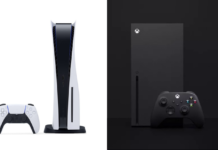Right now, the PlayStation Move and Microsoft Kinect devices seem to be all the rage when it comes to immersive gaming. Sony has moved quite a few million units (despite the fact the estimates keep jumping around) and the Kinect has already picked up ten million users, with several more bound to arrive this holiday season.
So there’s no question that the sales are good, but the real question that many of you might be asking is, “Is this the future of gaming?” Now, I know we’re in the midst of many gaming trends, including online multiplayer (competitive and social), 3D gaming, and downloadable games, but motion gaming actually got a foothold a few years back when Nintendo introduced it with their Wii system, hooking millions players with Wii Sports and several other immersive experiences. So, now that Sony and Microsoft have introduced their variations, is this really the next big thing in gaming?
It really depends on perspective. After all, no trend really leads in gaming forever. Not retro games, not technology (it always expands through new consoles), and apparently not even the Wii, which has fizzled in popularity over the past few months and forced Nintendo to focus instead on the 3DS handheld and the upcoming Wii U.

But there is longevity here. It really depends on a few things, and what Sony and Microsoft are prepared to do to see their way to these things. Let’s start with…
Appeal
Appealing to social crowds is definitely a plus, as games such as Kinect Sports and Sports Champions have obviously proved. But you also need to appeal to other audiences, lest you become interesting to only one type of gamer while being alienated by others. Case in point. Kids enjoy games such as EyePet or Kinectimals, and both are seeing sequels sooner rather than later, with expansions galore (and yes, Bears are an expansion). Hardcore gamers need their own experiences as well, and several released and upcoming games, such as Mass Effect 3, Child of Eden and Ghost Recon: Future Soldier, are starting to utilize more motion sensitive type controls. Even some bigger, badder efforts are showing signs of improvement with it, such as the previously released Killzone 3. And, of course, you also have to think “outside of the box” and reach audiences who normally wouldn’t play video games, such as danceaholics who couldn’t dare resist a round of Dance Central. Appeal is so important in many factors, and even if you turn off one kind of audience, you run the danger of falling behind. That’s exactly what happened with the Wii, despite the plethora of good games it’s received over the years.
Price
Are the Move and Kinect fairly priced nowadays? Well, sort of. Where the Wii system, with a Mario Kart game bundled in and the Motion Plus accessory, goes for $150, the PlayStation Move and Microsoft Kinect don’t exactly run cheap. The devices themselves go for $99 and $149, respectively, and bundled with systems, they can go upwards into the $299-$349 range. While those aren’t painstakingly bad prices (like the PS3 being $599 years ago), there’s still some work to be done. Both companies should consider a slight price decrease for this holiday season, to open doors to more budgetable families (they’re out there, thanks to the economic state of today’s business tide) and gamers who want to try something without going overboard on stretching their wallet.
Now, in some cases, repackaging might be the answer. Next month, Sony will introduce a Resistance 3 Sharpshooter bundle for $150, including the game, the shooting accessory, and all the PlayStation Move components needed to play. And Star Wars fans are no doubt already pre-ordering the announced Star Wars Kinect bundle, which will go for a costly $449.99, but include all sorts of limited edition goodies, perfect for fans of the science fiction saga.
But then again, not everyone can afford those astronomical prices, so both companies should consider cutting back something. For instance, would a Kinect bundle with Dance Central at $129 be such a bad thing? And for that matter, cutting the PlayStation Move Sports Champions bundle down to $80 might work a little magic, too. We’re not talking a huge cut, just something that provides a good amount of value for a lower cost. Surely a few more unit sales won’t put too many dents in sales margins, will they?

Innovation
Last but not least, there’s the most important factor when it comes to keeping the Kinect and PlayStation Move alive, and that’s longevity. The main problem the Wii ran into is that it was overrun with third-party glut that saturated the quality of the system, whether it was by Conspiracy Software, Zoo Games or a handful of other shovelware developers. Sadly, a lot of developers and publishers might be following a similar trend with the Move and Kinect, though we doubt that either Sony or Microsoft will let it get too far out of hand.
Still, there are only so many dancing games and shooting games we can take before something gets a little stale. So developers should keep coming up with ways to make the devices stand out, and make motion gaming seem like more than just a fad with nothing behind it. And several already have some interesting ideas…
Even though the execution is a little less than we would’ve preferred (at the moment), Star Wars Kinect should have appeal to sci-fi fans tired of wrestling with a controller. Rise of Nightmares, Sega’s mature Kinect title that’s due early next month, promises a great deal of scares and brutality, without the need for tapping buttons. And then there’s Child of Eden, a game that did remarkably well for Kinect in terms of gameplay and fun, and should easily do the same for Move when it comes out next month. For that matter, Fruit Ninja Kinect, Halfbrick’s console variation of its hit tablet game, is already turning a few heads, as you can see from our review.
It’s important to keep some lively experiences going, because otherwise, players will fail to see the point and they’ll become bored, or go back to the regular ol’ controller. It’s up to developers and publishers to really push forward and think of things that make motion gaming fun, rather than run the same old route.
So, do you agree that these are excellent fundamentals when it comes to keeping motion gaming in the popular landscape? Granted, it may not be the ultimate future as far as gaming goes, but it could easily be a part of it, so long as the right folks do their job properly, rather than letting it fade into monotony.










